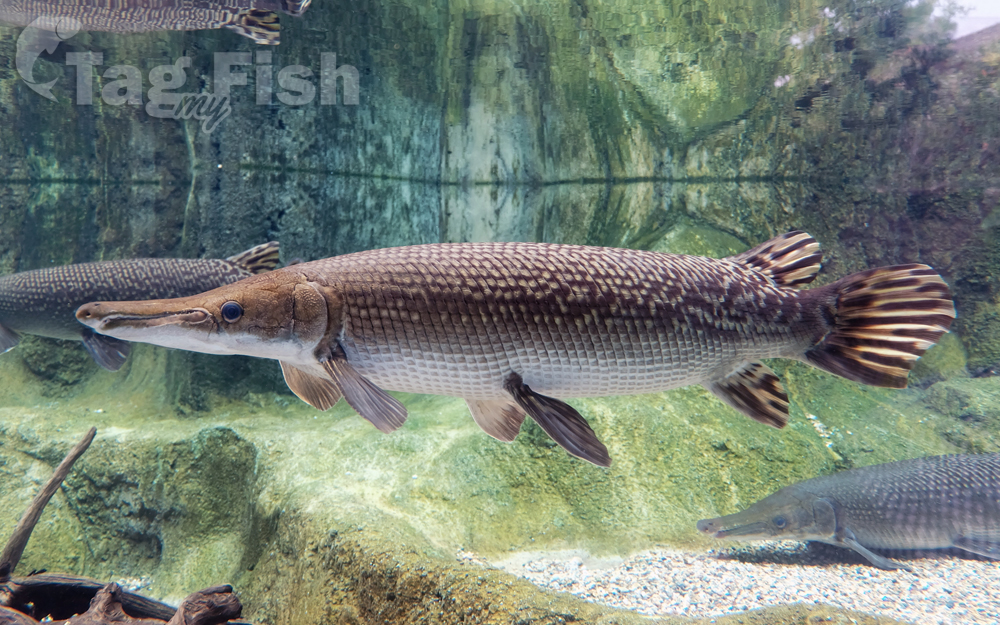Alligator gar
(Atractosteus spatula)

Classification
General data
The body of an alligator gar is torpedo-shaped, usually brown or olive, fading to a lighter gray or yellow ventral surface. Their scales are not like the scales of other fishes; rather, they are ganoid scales, which are bone-like, rhomboidal-shaped scales, often with serrated edges, and covered by an enamel-like substance. Ganoid scales are nearly impenetrable and are excellent protection against predation. Unlike other gar species, the upper jaw of an alligator gar has a dual row of large, sharp teeth that are used to impale and hold prey. Alligator gar are stalking, ambush predators, primarily piscivores, but they also ambush and eat waterfowl and small mammals they find floating on the surface.
Populations of alligator gar have been extirpated from much of their historic range as a result of habitat destruction, indiscriminate culling, and unrestricted harvests. Populations are now located primarily in the southern portions of the United States extending into Mexico. They are considered euryhaline because they can adapt to varying salinities ranging from freshwater lakes and swamps to brackish marshes, estuaries, and bays along the Gulf of Mexico.











